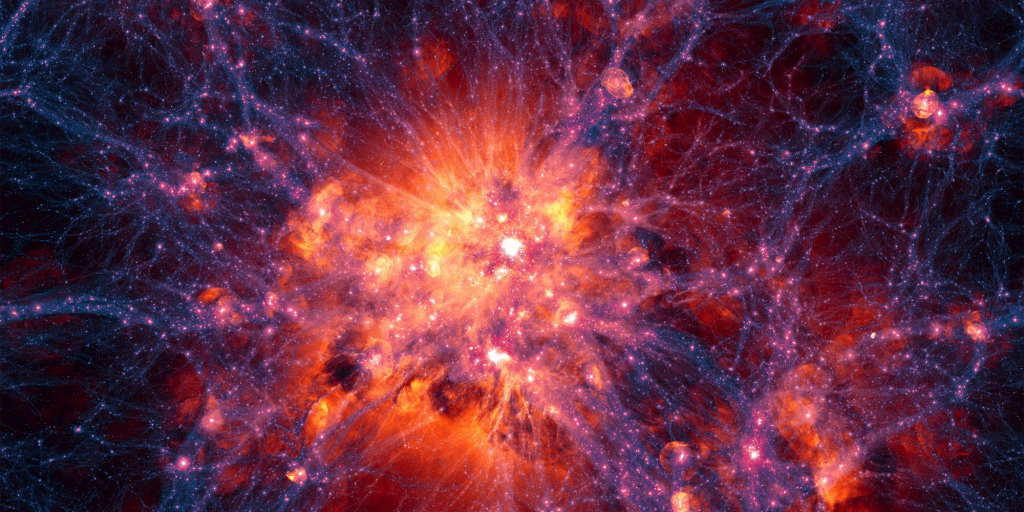Cosmologists have presented a theoretical breakthrough that may explain both the nature of invisible dark matter and the large-scale structure of the universe known as the cosmic web.

Cosmologists propose a groundbreaking theory that could illuminate the enigma of dark matter and explain the cosmic web, the universe’s large-scale structure. Led by the University of Toronto and published in the Journal of Cosmology and Astroparticle Physics, the research implies that the “clumping problem”-the surprisingly uniform distribution of matter on a cosmic scale-might hint at dark matter comprising axions, theoretical ultralight particles.
Dark Matter’s Influence on the Universe’s Clustering
Unveiling elusive axions could answer fundamental queries about the universe’s nature, extending beyond dark matter comprehension. “If future observations and lab experiments confirm axion dark matter, it would mark one of this century’s most pivotal discoveries,” remarked lead author Keir Rogers of the Dunlap Institute for Astronomy and Astrophysics.
Dark matter, forming 85% of the universe’s mass and invisible due to its non-interaction with light, is studied via its gravitational effects on visible matter. Axions, quantum mechanics’ “fuzzy” components, may constitute dark matter. Their wave behavior permits longer wavelengths than entire galaxies, influencing dark matter formation and distribution.
Axions and a Smoother Universe
Axions might explain why the universe appears less lumpy than predicted. This unanticipated smoothness, observed in vast galaxy surveys, poses a challenge to the opposing theory suggesting dark matter comprises only weakly interacting heavy subatomic particles (WIMPs). Despite efforts like the Large Hadron Collider, no evidence of WIMP exists.
Cosmic Microwave Background Analysis and Simulations
The research team scrutinized the Cosmic Microwave Background (CMB), relic light from the Big Bang, from the Planck 2018 surveys, the Atacama Cosmology Telescope, and the South Pole Telescope. They contrasted the CMB data with galaxy clustering data from the Baryon Oscillation Spectroscopic Survey (BOSS).
Studying galaxy distribution, reflecting dark matter’s behavior under gravity, the team noted fewer matter fluctuations in the universe than expected. Using computer simulations to model a universe with long dark matter waves, they found alignment with the CMB and galaxy clustering data—boosting the argument that fuzzy axions could solve the clumping problem.






